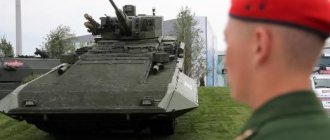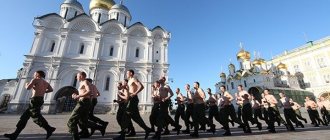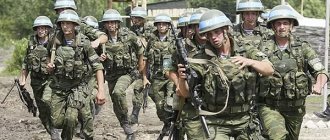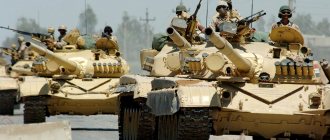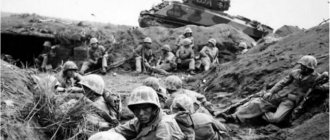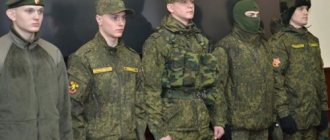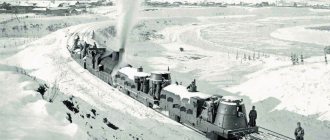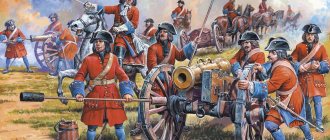Chechen battalions of the Kremlin: the army of academician Kadyrov
Chechnya is the only region of Russia where the Russian army does not recruit recruits from, and where the Kremlin has agreed to the creation of local units controlled de facto only by the head of the republic. According to various sources, Ramzan Kadyrov has from 10 to 30 thousand armed and combat-ready people at his disposal. Some observers consider them the main support of Vladimir Putin's regime.
Burden of Empire
Russian great-power chauvinists, demanding to “stop feeding the Caucasus” on the one hand, and on the other, proclaiming the slogan “we will not give up a centimeter of our land,” are in an unconscious state of mild schizophrenia.
The “pacification” of Chechnya and the preservation of the territorial integrity of Russia, which Russian caricatured patriots are so concerned about, costs the country annually between 2.5 and 3.5 billion dollars. This is exactly how much money is transferred to Chechnya annually in the form of direct transfers, not counting, of course, indirect subsidies. For example, Chechnya's total debt for electricity as of June 1, 2011 amounted to 4.7 billion rubles and every month it increases by 150 million rubles (for comparison, in Dagestan - 5.6 billion and 120 million rubles, respectively). This despite the fact that some electricity tariffs for residents of a number of regions of the North Caucasus Federal District (NCFD) have a preferential discount of 40%.
In general, the level of collection of utility services in Chechnya is only 40%, in Dagestan - about 50%.
In 2007-2009, the Kremlin invested up to $6 billion annually in the North Caucasus in the form of direct transfers alone. And over the past 10 years, about 820 billion rubles ($29 billion) have been invested there. This year, the six republics of the North Caucasus Federal District will receive 129 billion rubles in the form of gratuitous transfers (of which 52 billion will go to Chechnya, 42 billion to Dagestan, 11.5 billion rubles to Kabardino-Balkaria). Investments are also made through federal target programs (FTP). Over the past three years, they amounted to about 92 billion rubles (according to the Accounts Chamber). For Chechnya in 2008, a special program “Socio-economic development of the Chechen Republic for 2008-2011” was adopted with a funding volume of 12 billion rubles (4 billion annually), then its volume was increased to 15 billion rubles. In 2002-2007, the federal center invested 41.5 billion rubles in Chechnya under the target program “Restoration of the Economy and Social Sphere of the Chechen Republic”. In 2004, the total total subsidies to Grozny amounted to about 23.3 billion rubles, now they have increased by at least 2.5 times.
In addition, the Kremlin is also investing money in the North Caucasus under other federal targeted programs - “South of Russia”, “Development of the Republic of Ingushetia” and so on. Until 2013, the Kremlin, within the framework of all target programs, intends to invest up to 339 billion rubles in the Caucasus, and the total “package” of investments until 2022 already amounts to a trillion rubles.
Every year, the federal center, in per capita terms, invests from 50 to 60 thousand rubles in Chechnya, which is almost 10 times higher than the same figure for the Stavropol Territory (the Interpreter’s blog has already written in more detail about “subsidies” to the regions of the Russian Federation here). However, the effectiveness of these investments is monstrously low. No new industries have been created in the region, more than 80% of its economy is in the shadows, and according to official data, 42% of the working population of Chechnya and 22% of the population of Ingushetia are unemployed. In the age group of 20-28 years, the share of officially unemployed reaches 60%.
Almost 50% of enterprises in Chechnya, 55% in Dagestan and 45% in Ingushetia are unprofitable. The total volume of losses in commercial structures in Chechnya in 2010 amounted to 2.5 billion rubles, in Ingushetia - about 1.5 billion rubles. The total overdue accounts payable of firms and enterprises in the Chechen Republic, according to data at the end of last year, amounted to about 50 billion rubles, in Dagestan - about 22 billion rubles.
However, the idea that Russia is paying a kind of “tribute” to the Caucasus in this way is one-sided. In reality, the federal center and regional “elites” are each other’s hostages. It’s no secret that federal money, first of all, serves to feed the bureaucrats and security forces, which have multiplied in the North Caucasus republics in extraordinary numbers, as well as for kickbacks to the “federals” themselves.
The Kremlin relies on local “field” commanders who pay their fighters (it doesn’t matter that most of them are officially employed in the police, riot police, commandant’s offices and other law enforcement agencies), and the key to the survival of the regional barons themselves lies in annual transfers. If the financial flow decreases or completely dries up, the situation in the Caucasus will move into the stage of a hot war - a huge mass of unemployed youth will be sent by regional leaders losing their “authority” to the “external enemy.”
This is most clearly seen in the example of Chechnya, a virtually semi-independent region of the Russian Federation. Here, Major General of the Ministry of Internal Affairs and academician Ramzan Kadyrov has from 10 to 30 thousand armed fighters at his disposal, the vast majority of whom have combat experience, good military training, motivation and are now serving as part of formally Russian security forces. And now Moscow can no longer reduce (let alone stop) financial assistance to this republic, although every year it becomes more and more burdensome for the federal budget. Otherwise, a repetition of the Russian-Chechen war becomes inevitable.
General Kadyrov's army
For Chechen society, which is still essentially at the clan-tribal (teip) stage, the traditions of leaderism or spontaneous tsarism, unusually popular among Russians, are alien. Actually, the history of the Chechen republics of 1991-2004 showed that the formal leader here is only one of the field commanders, controlling at best the capital city and a small district. At the same time, at least half of Chechnya will be in opposition to such a government. Let us recall that opposition to Dudayev arose immediately after the establishment of his regime, and since 1992, a number of northern regions of Chechnya openly ceased to obey him.
Ramzan Kadyrov has a similar situation now - the power of one of the nine Chechen “tribes” (Tukkhums) is little liked by the other 8, and despite the “purge” of obvious opponents (for example, the Yamadayev clan), Kadyrov will be the President of Chechnya for exactly as long as the Kremlin transfers to him money. As mentioned above, if this flow dries up, then Ramzan Akhmatovich will have only one way of survival - channeling aggression towards an “external” enemy. Therefore, when analyzing the Chechen armed forces, we will focus on the degree of loyalty of their fighters to Kadyrov himself, defining them as “devoted”, “loyal” and simply potentially possible for mobilization.
The first large Chechen armed formations on the side of the federal forces in the 1999-2005 war in Chechnya appeared immediately after the surrender of Gudermes. Then the units of the Yamadayev clan (this was the 2nd battalion of the National Guard of Ichkeria under the control of Dzhabrail and Sulim Yamadayev) and the Mufti of Chechnya Akhmat Kadyrov went over to the side of the “federals.” Until the spring of 2002, the so-called “Chechen militia” existed in the republic, made up of militants from Kadyrov and the Yamadayevs. Then, in March 2002, a special company of the military commandant’s office of the Mountain Group of the Ministry of Defense was created from them, and in the fall of 2003 it grew to the special battalion “Vostok” of the 42nd motorized rifle division of the Russian army, numbering up to 1,500 people.
At the same time, Kadyrov’s men entered the main body of the so-called security service of Chechen President Alu Alkhanov (sometimes it was called the “presidential regiment”; its number was over 2 thousand people). The third Chechen formation - the special battalion of the 42nd motorized rifle division "West" was formed from long-time opponents of the separatists (anti-Dudaev opposition) led by Said-Magomed Kakiev (adherents of the Naqshbandi branch of Sufism). Kakiyev had been fighting with Dudayev since 1992 under the leadership of Umar Avtorkhanov, his soldiers seized the television center in Grozny in November 1994, and performed well during the summer storming of the Chechen capital, “shameful” for the Russian army, staged by the separatists in 1996. In addition, the militants of the anti-Dudaev opposition groups managed to wage a successful guerrilla war behind the lines of the Chechen rebels. Many of them returned to Chechnya after 1999 in the ranks of the special company of the 42nd division and in 2003 they formed the backbone of the “West” battalion. In addition to them, one can also note the pro-Russian detachments of Beslan Gantamirov and the “Highlander” group of the GRU of the General Staff, led by Movladi Baysarov.
The new influx of Chechens into Russian security forces coincided with the creation of the Chechen Ministry of Internal Affairs in 2002 - then Kadyrov Sr. convinced the Kremlin that the militants hiding in the mountains and forests could be won over to their side. As a result, a stream of “repentant” separatists poured into the Chechen police and companies at military commandant’s offices. According to various sources, in 2002-2005, Kadyrov managed to lure from 7 to 14 thousand militants out of the forest.
In 2002-2005, from among them, both the security service (SB) of the President of Chechnya and a separate regiment of the patrol service of the Ministry of Internal Affairs of the republic, consisting of 10 companies, were partially staffed. The size of this unit was not clearly stated anywhere; the upper estimates spoke of 4,000 fighters with small arms, grenade launchers and even armored personnel carriers. In 2005, the Anti-Terrorism Center (ATC) was created in Chechnya, into which personnel from the Security Council of the President of Chechnya were merged, and in 2006, the ATC was abolished and two special battalions were formed from them and some of the “policemen” in the 46th division of the internal troops of Russia, stationed in Chechnya - “South” and “North”, then with a total number of up to 1200 soldiers (248th and 249th special separate battalions).
By 2005, the Kremlin decided to finally place its bets on Akhmat Kadyrov (by that time he had become a Hero of Russia), who was well suited to the role of a “Chechen leader,” as ideologists from Moscow believed. In 2007, Vladimir Putin reduced the size of the army group in Chechnya from 50 to 25 thousand people, and Kadyrov had previously taken control of Operational Investigative Bureau 2 (ORB-2) and dealt with Movladi Baysarov, who was not under his control. In addition, the “leader” also took control of the entire republican Ministry of Internal Affairs, within which a “special forces” regiment was created. Its functions also included the fight against “terrorists” outside Chechnya itself.
Within a few years, the number of Chechen police tripled. If in 2003 its staff numbered about 5.5 thousand people, and in subsequent years it grew to 16 thousand people. A separate unit of the republican Ministry of Internal Affairs, personally controlled by Kadyrov (Akhmat and Ramzan), was the private security regiment - or, as it was called in the republic, the “oil regiment”. Formally, he guarded pipelines and refineries in Chechnya. The number of its fighters, according to experts, ranged from 1,500 to 4,500 people. Employees of this unit were involved in the execution of Movladi Baysarov in Moscow in November 2006.
Personally, Ramzan Kadyrov, who has the rank of Major General of the Ministry of Internal Affairs, also reports to the Chechen riot police consisting of 300 fighters (formally, of course, this detachment is part of the structure of the Russian Ministry of Internal Affairs, but...). In 2008, Razman Kadyrov resolved the issue with the last armed Chechen formations in the republic, which had not previously been subordinate to him - the “East” and “West” battalions of the 42nd motorized rifle division. The battalions were disbanded to the level of individual companies under the 42nd Division in the fall of 2008.
At the same time, the Kremlin, as part of military reform, disbanded the only combat-ready Russian army unit in Chechnya - the 42nd division, which numbered up to 16 thousand soldiers. In its place, three separate motorized rifle brigades now appeared - the 18th separate motorized rifle brigade, the 17th separate motorized rifle brigade, and the 8th separate motorized rifle (mountain) brigade. Their total strength is kept secret, but it appears to be lower than that of the 42nd Division.
Thus, Akhmat Kadyrov’s “army” consists mainly of employees of the republican Ministry of Internal Affairs, riot police, individual regiments (special forces, “oil”, patrol service) of the Ministry of Internal Affairs of Chechnya, two special battalions “North” and “South” of the 46th division of internal troops , stationed in Chechnya, two special companies as part of the former 42nd motorized rifle division, as well as several security companies of commandant’s offices and personal security.
Officially, Chechnya does not supply recruits to the Russian army, but military commissariats have been recreated on the territory of the republic, which select and register conscripts. This year, about 7,000 people were registered, several hundred of whom went to serve in the “Chechen” units of the internal troops and commandant companies.
Structure of Ramzan Kadyrov's army (at the beginning of 2011):
Private security regiment under the Ministry of Internal Affairs of Chechnya (“oil” regiment) - 2400-3000 soldiers.
Special purpose regiment under the Ministry of Internal Affairs of Chechnya - 1600-1800 soldiers.
Battalions “North” and “South” of the 46th division of internal troops of the Ministry of Internal Affairs of Russia - about 2000 soldiers.
Two separate regiments of patrol and guard service (PPSM No. 1 and No. 2, formed from separatists) - 1200-1500 soldiers each - 2400 - 3000 soldiers in total.
Two special companies under the former 42nd motorized rifle division - up to 300-500 soldiers.
Security companies of commandant's offices - up to 500-1000 soldiers.
Riot police of the Ministry of Internal Affairs of the Chechen Republic - 300 soldiers.
The personal security of Ramzan Kadyrov and senior officials of the Chechen Republic is about 500 people.
The total number of these units, staffed by people loyal to Ramzan Kadyrov, within these minimum limits ranges from 10 to 12.1 thousand people .
The total number of Chechen “security forces” is up to 18-20 thousand people (maximum estimates reach 30-34 thousand people). Of course, not all of them are equally loyal to the professor of Grozny University and the academician of the Russian Academy of Natural Sciences. However, a salary of 25-27 thousand rubles for ordinary police officers (excluding kickbacks to superiors), which remained in Chechnya even after the abolition of the counter-terrorist operation regime in 2009 (CTO), is a good incentive to express external loyalty to the head of Chechnya.
In terms of the size of his own “private” army, which, however, is maintained with money from the federal budget, the leader of the Chechen Republic is in no way inferior to the army of the head of the Ministry of Emergency Situations, Sergei Shoigu, or the Federal Security Service. In terms of combat effectiveness, Kadyrov’s fighters are an order of magnitude superior to the larger “armies” of Russian state corporations - Russian Railways, Transneft, Rosatom (as the Interpreter blog wrote earlier, their number reaches up to 150 thousand people). According to conspiracy theorists, Kadyrov’s men are almost the personal guard of the country’s second president, Vladimir Vladimirovich Putin I, who managed to quite effectively “pacify” the rebellious republic.
The official legislation of the Russian Federation does not allow the creation of ethnic or regional “armies”, but the existence of Kadyrov’s units is completely in line with the traditions of Russia as a primitive “militocracy” - an atavistic, early-war state with an appropriating economy (distribution of seized “rent” from subject territory). Every official or security official in such a state is something between an occupation policeman and a Basque colonialist.
Let us recall that in Russia, up to 4.5 - 5 million people serve in various security and paramilitary bodies, for the maintenance of which the federal budget (excluding regional ones) allocates at least 36% of its expenses (about 3.6 trillion rubles per year). In total, the country spends almost half of its budget on maintaining this parasitic superstructure.
Content
- 1. History
- 2 Armed forces 2.1 Types of armed forces 2.1.1 Ground forces
- 2.1.2 Air force
- 2.1.3 People's militia
- 3.1 Rank insignia
- 4.1 Ministry of the Interior 4.1.1 Insignia
- 4.2.1 Rank insignia
Notes
- ↑ 1 2
Weapon magazine |
Airsoft magazine | ARMY OF REBEL ICHKERIA (undefined)
.
gunmagazine.com.ua
. Date accessed: August 7, 2022. - ↑ 1 2
Terrorists in exile: what Chechen field commanders are doing in Europe and other countries of the world (Russian).
Rambler/news
. Date accessed: August 7, 2022. - ↑ 1 2
DOG OF WAR - SPECIAL FORCES OF RUSSIA - Anti-terror
(unspecified)
.
www.specnaz.ru
. Date accessed: August 7, 2022. - ↑ 12
Chechen Republic of Ichkeria Political monitoring - ↑ 1 2 Karpov I. E., Plotkin G. L.
, Armed Forces of the ChRI Archival copy dated March 25, 2008 on the Wayback Machine - ↑ 1 2 Karpov I.E., Plotkin G.L.
Armed forces of the Chechen Republic of Ichkeria 1994-1996.
(unspecified)
(inaccessible link).
War in Chechnya Chechnya.Genstab.ru
(March 23, 2002). Archived March 25, 2008. - On the issue of the armed forces and the military-political situation in the Chechen Republic
- ↑ 1 2 3 4 5 6 7 8 9 10 11 12 13 14 15 16 17 18 19 20 21 22 23
M. Zhirokhov (2004-08-09),
the Ichkerian Air Force
, Corner of the Sky - V. Morozov. "Lone Wolves" Air Force of the Chechen Republic of Ichkeria in 1992-1994. Aviation and time, 2013, No. 1.
- Wing palette, Chechnya (Ichkeria
) - Apti Batalov's page on the social network Facebook (unspecified)
(inaccessible link). Retrieved March 31, 2011. Archived October 29, 2022. - ↑ 123456
Timur Muzaev - CHECHEN REPUBLIC OF ICHKERIA. General review. - ↑ 1234
Chechen crisis-99 Timur MUZAEV Archived copy of November 9, 2011 on the Wayback Machine - ↑ 12
Chechen Republic of Ichkeria in May 1999 Timur MUZAEV. 1999 From the series “Political Monitoring”.
Illegal armed groups
During the interwar period, the structure and composition of the armed forces of Ichkeria changed depending on the relationship between the central government and numerous field commanders (Basayev, Raduev, Yamadayev). So, in addition to the forces subordinate to the President of Chechnya Aslan Maskhadov, the following acted:
- Army of General Dudayev (AGD), under the command of Salman Raduev;
- Islamic Special Purpose Regiment (IPON), under the command of Arbi Barayev;
- Islamic International Peacekeeping Brigade, under the command of Shamil Basayev;
Story
As a result of the events of September-November 1991, the Chechen Republic actually seceded from the USSR. On November 1, 1991, President Dzhokhar Dudayev signed a decree on the state independence of the Chechen Republic; on March 13, 1992, the Constitution adopted by the Parliament of the Chechen Republic came into force, according to which Chechnya was proclaimed “a sovereign democratic legal state created as a result of the self-determination of the Chechen people.” On March 31, 1992, the Chechen authorities refused to sign the Federal Agreement[4].
In accordance with Dzhokhar Dudayev’s decree No. 2 of November 8, 1991, the Ministry of War was established, and all military formations “regardless of the order of subordination” came under the full control of the ministry. Based on the Law of the Chechen Republic “On Presidential Activities” and Decree No. 16 of December 9, 1991. “all armed formations on the territory of the Chechen Republic were subordinate to the president”[5].
The role of the military department was performed by the General Staff of the Armed Forces. The chief of the General Staff was Lieutenant General Viskhan Shakhabov (former colonel of Soviet aviation), the deputy chief of the General Staff was Colonel Aslan Maskhadov, and the head of the Operations Directorate of the General Staff was Colonel Ali Matsayev[4].
The Law on Defense of the Chechen Republic of December 24, 1991 introduced compulsory military service for all male citizens of Chechnya; At the same time, young men aged 19-26 were called up for active service. Based on Dudayev’s decree No. 29 of February 17, 1992, military personnel citizens of the Chechen Republic who left military units on the territory of the former USSR without permission and expressed a desire to serve in the Armed Forces of the Chechen Republic were rehabilitated, and the criminal cases brought against them were terminated. In order to recruit the army, a call was announced for reserve officers and sergeants. For the period 1991-1994. Six mobilizations were carried out into the ranks of the Armed Forces of the Czech Republic[6]. The basis of the command staff of the Chechen army were former officers of the Soviet army, many of whom had experience of combat in Afghanistan, the Georgian-Abkhaz conflict and other hot spots[5].
Law enforcement
Initially, the law enforcement agencies of the CRI included the Ministry of Internal Affairs (MVD), the National Security Service (NSS), the Prosecutor General's Office, as well as special law enforcement agencies and units, one of which was the Anti-Terrorism Center under the President of the CRI[12].
The heads of the Ministry of Internal Affairs and the Prosecutor General's Office of the CRI have repeatedly criticized the activities of Sharia courts (including the Supreme Sharia Court of the CRI), which were accused of conniving with criminals, and demanded the establishment of control over judges[12].
Ministry of Internal Affairs
The Minister of Internal Affairs in the administration of President Aslan Maskhadov was Kazbek Makhashev, who held the same post in the administrations of Dzhokhar Dudayev and Zelimkhan Yandarbiev, and was previously a member of the State Defense Council of the Chechen Republic of Ichkeria[12].
Insignia
Order No. 164 of December 7, 1993 “On the establishment of military and special ranks for military personnel of the armed forces of the Chechen Republic, military formations and police”
Generals and officers
| Categories | Generals | Senior officers | Junior officers | ||||||
| Chechen rank | General of Police | Brigadier General of Police | Police Colonel | Police Lieutenant Colonel | Police Major | Police Captain | Police Lieutenant | Police Lieutenant | |
| Russian compliance | Lieutenant General | Major General | Colonel | Lieutenant colonel | Major | Captain | Senior Lieutenant | Lieutenant | |
Sub-officers and soldiers
| Categories | Sergeants and petty officers | Soldiers | |||
| Chechen rank | Police sergeant | Senior Police Sergeant | Police Sergeant | Senior police officer | Police officer |
| Russian compliance | Sergeant Major | Staff Sergeant | Sergeant | Corporal | Private |
Sleeve insignia
- Ministry of Sharia State Security inscription - Sword of Justice
National Security Service
In June 1997, Brigadier General Lechi Khultygov, who previously served as vice president and chief of staff of the National Security Service, was appointed director of the National Security Department of the ChRI. Lechi Khultygov was considered a member of Aslan Maskhadov’s team and was known as a supporter of the most decisive measures in the fight against crime (in particular, he was the initiator of public executions of criminals in Grozny).
Insignia
Order No. 164 of December 7, 1993 “On the establishment of military and special ranks for military personnel of the armed forces of the Chechen Republic, military formations and police”
Generals and officers
| Categories | Generals | Senior officers | Junior officers | |||||
| Chechen rank | Brigadier General of the Security Service | Security Colonel | Lieutenant Colonel of the Security Service | Security Major | Security Captain | Security Lieutenant | Security Lieutenant | |
| Russian compliance | Major General | Colonel | Lieutenant colonel | Major | Captain | Senior Lieutenant | Lieutenant | |
Sub-officers and soldiers
| Categories | Ensigns | Sergeants and petty officers | Soldiers | ||||
| Chechen rank | Senior Warrant Officer | Ensign | Sergeant Major | Staff Sergeant | Sergeant | Corporal | Private |
| Russian compliance | Senior Warrant Officer | Ensign | Sergeant Major | Staff Sergeant | Sergeant | Corporal | Private |
Sleeve insignia
- State Border and Customs Service
- Border troops
General Prosecutor's Office
The Prosecutor General in the administration of President Aslan Maskhadov was Khavazh Serbiev, who held the same post in the administration of Zelimkhan Yandarbiev[12].
Special law enforcement agencies and units
Anti-Terrorism Center under the President of the Chechen Republic of Ingushetia
In May 1997, the Anti-Terrorism Center under the President of the Chechen Republic of Ingushetia was created, the head of which was the field commander Hunkar-Pasha Israpilov[12].
